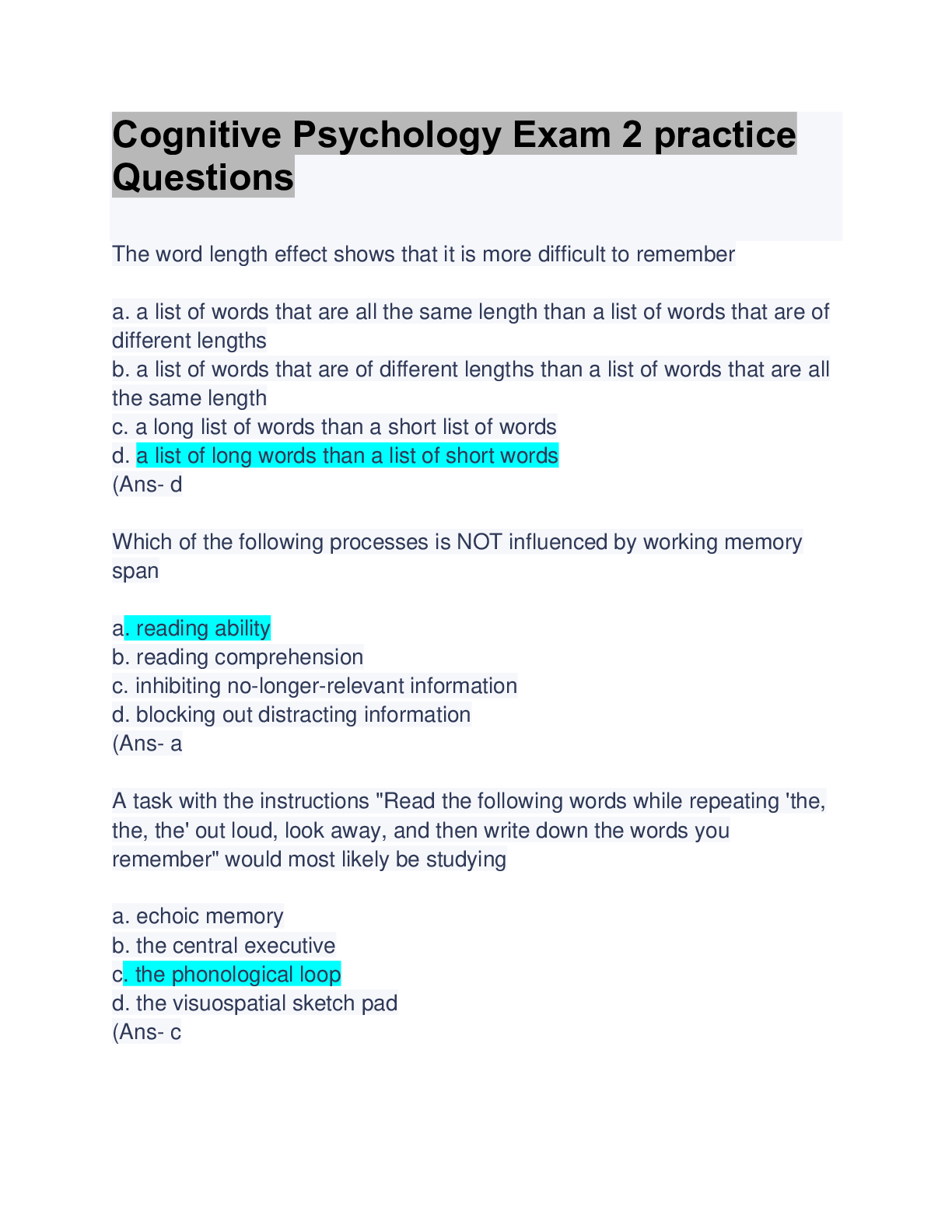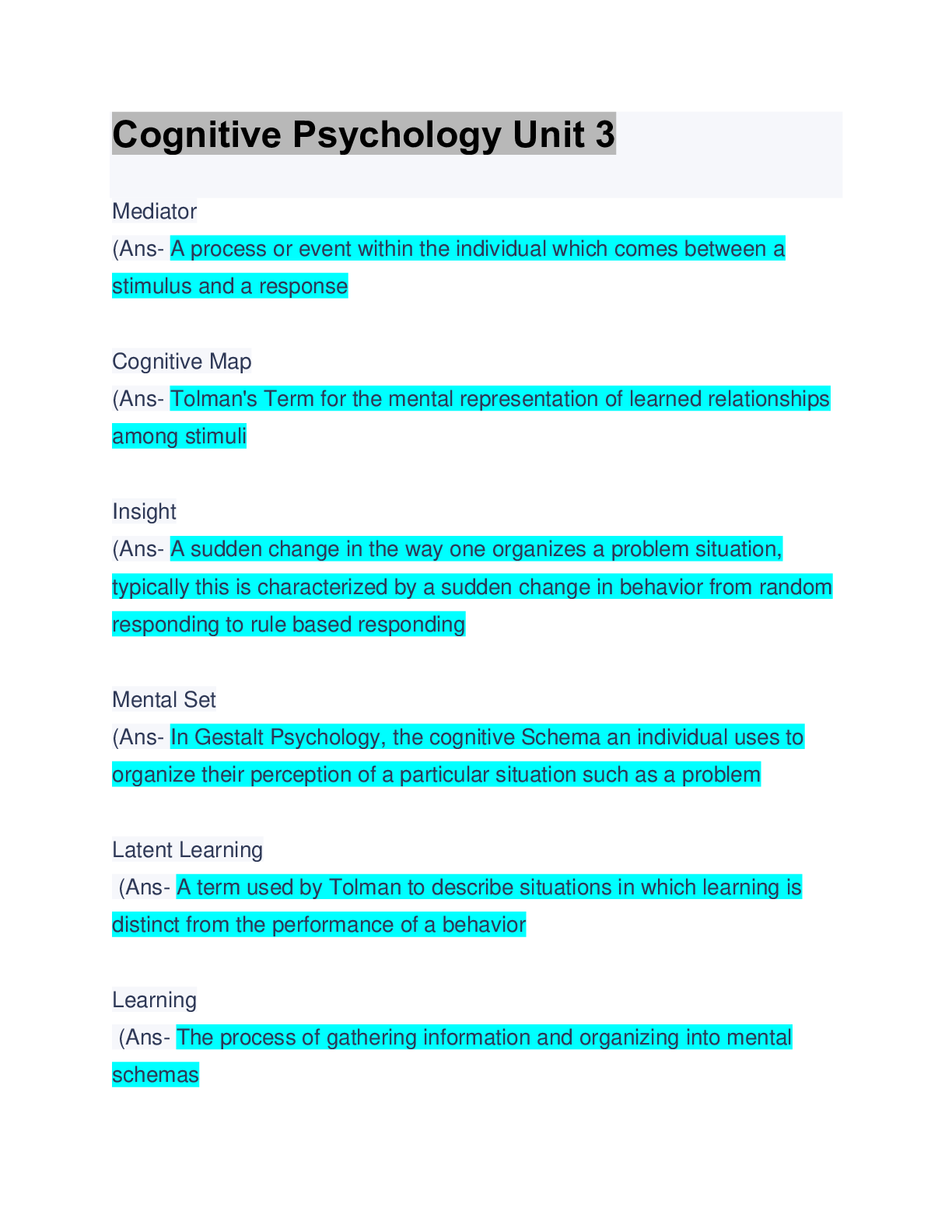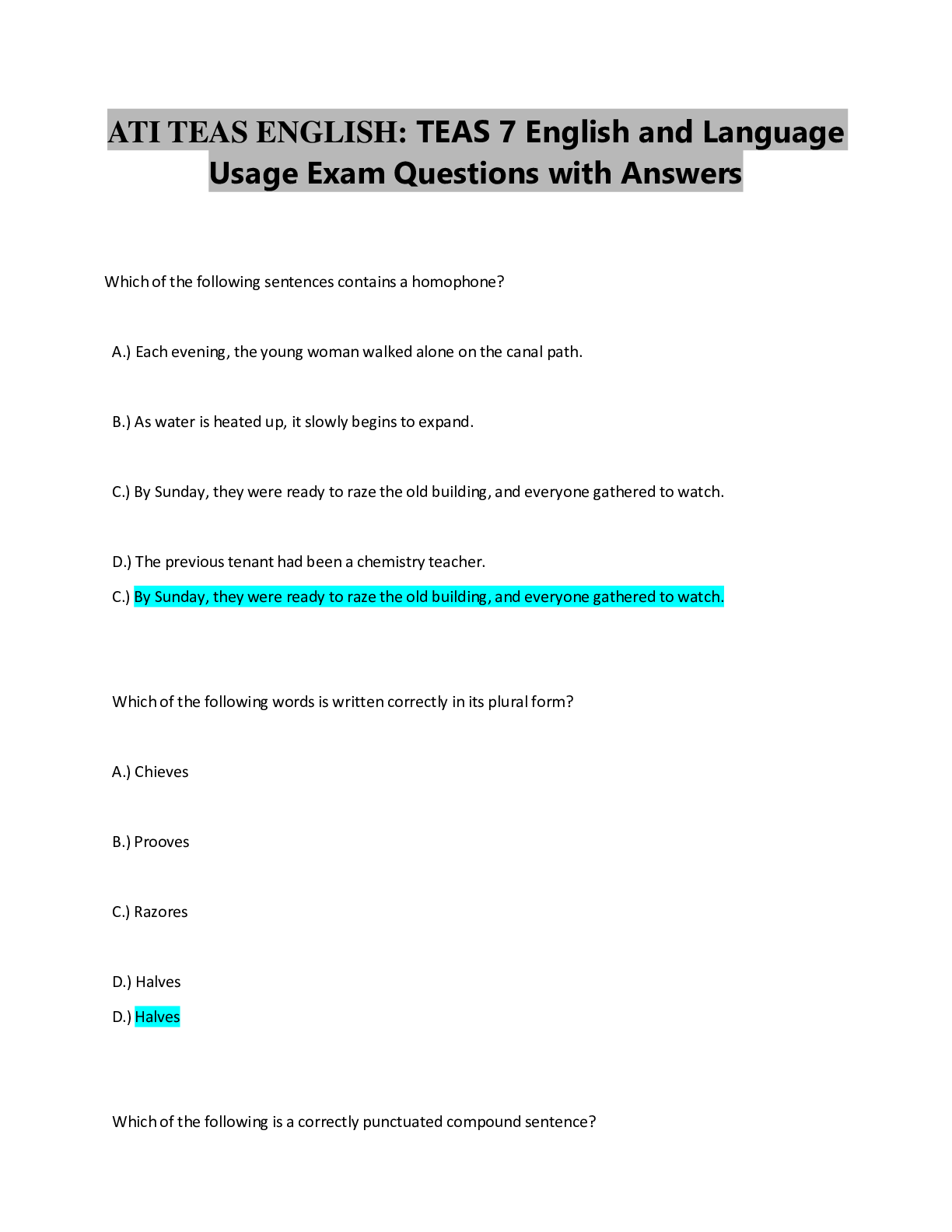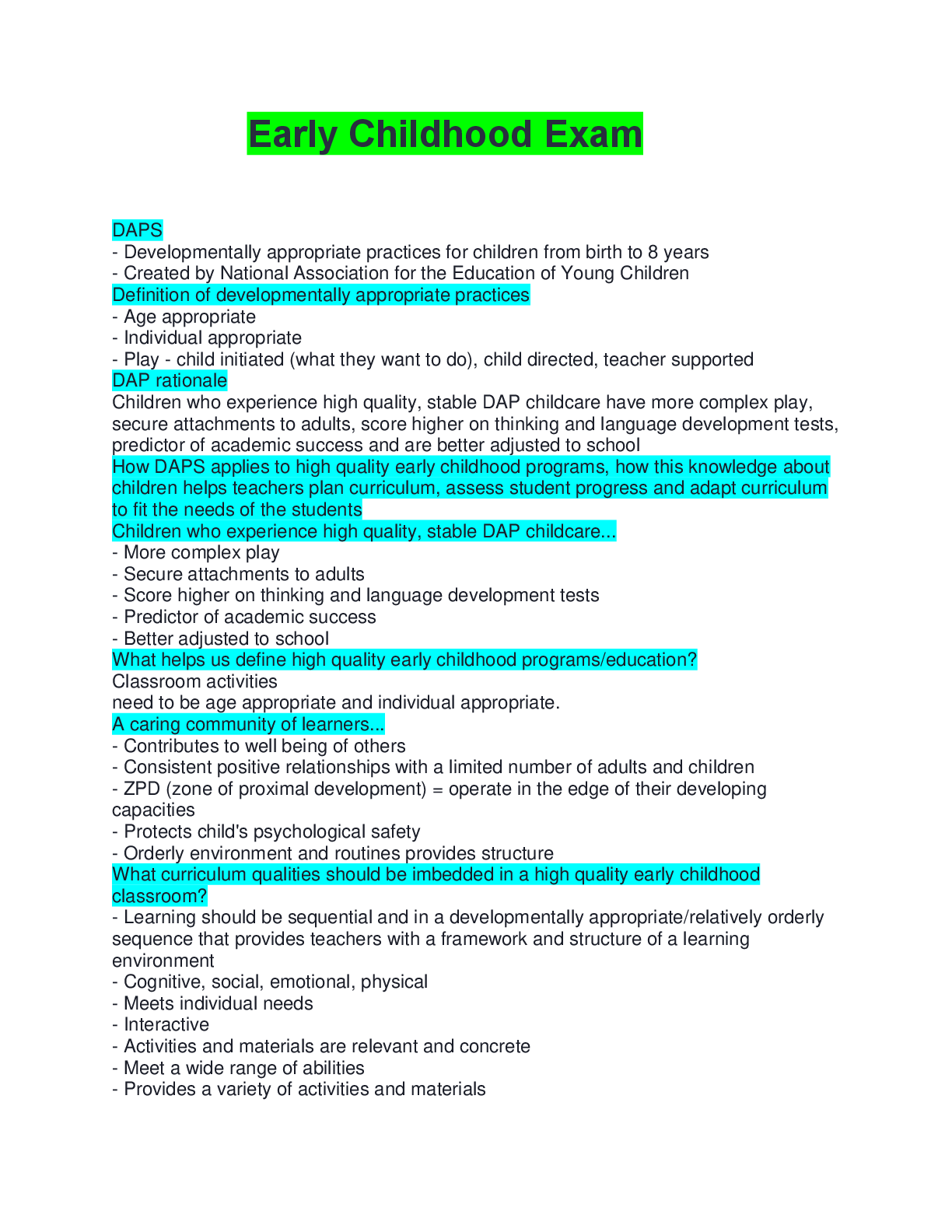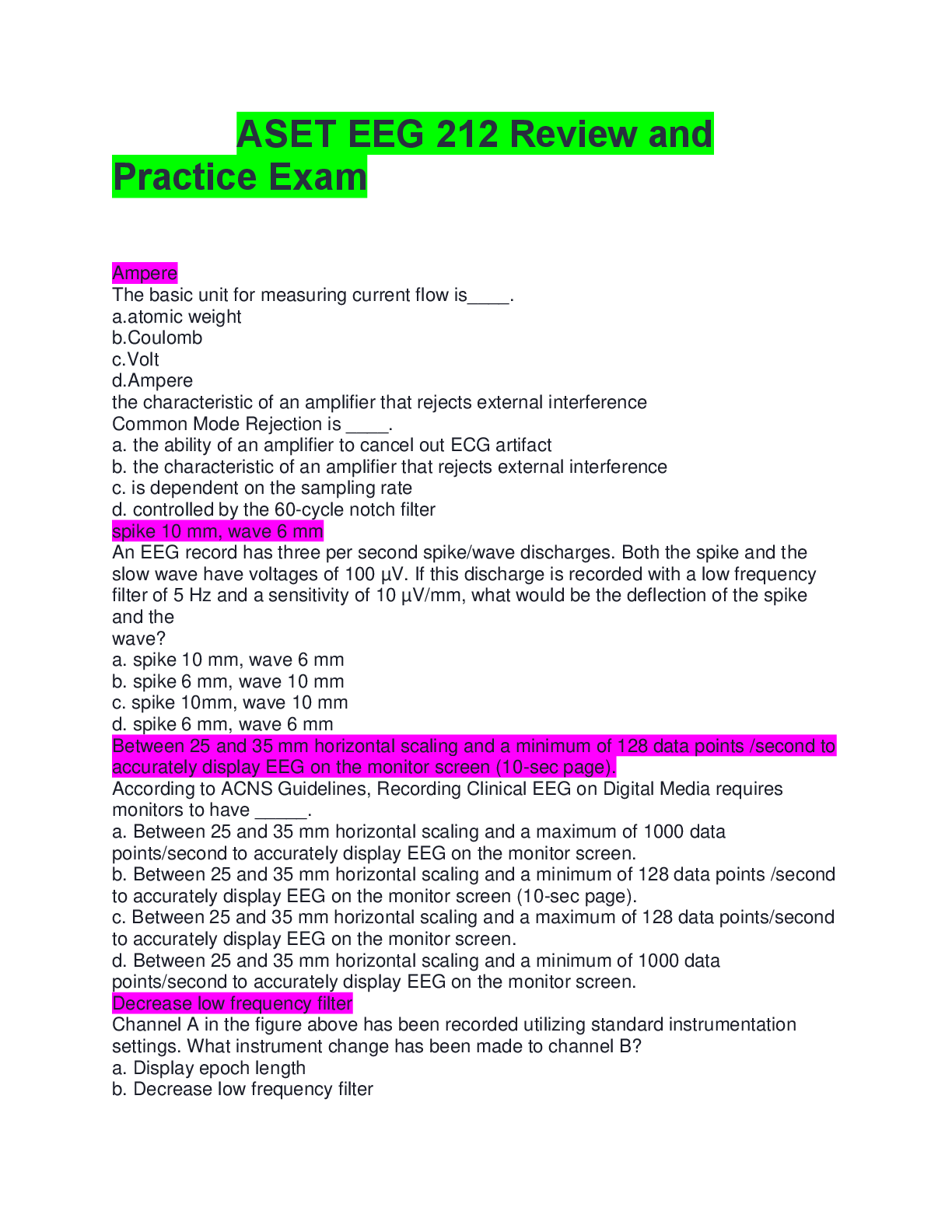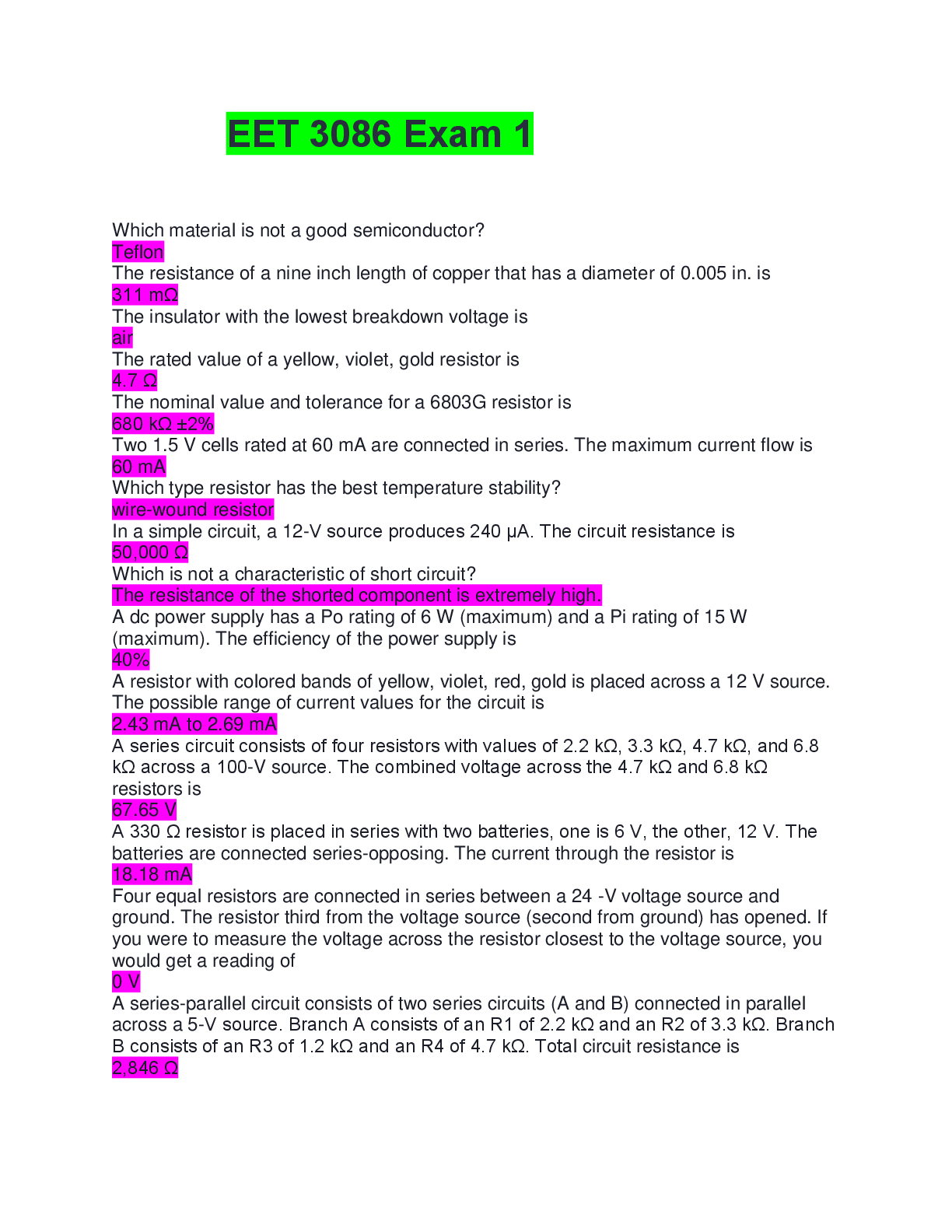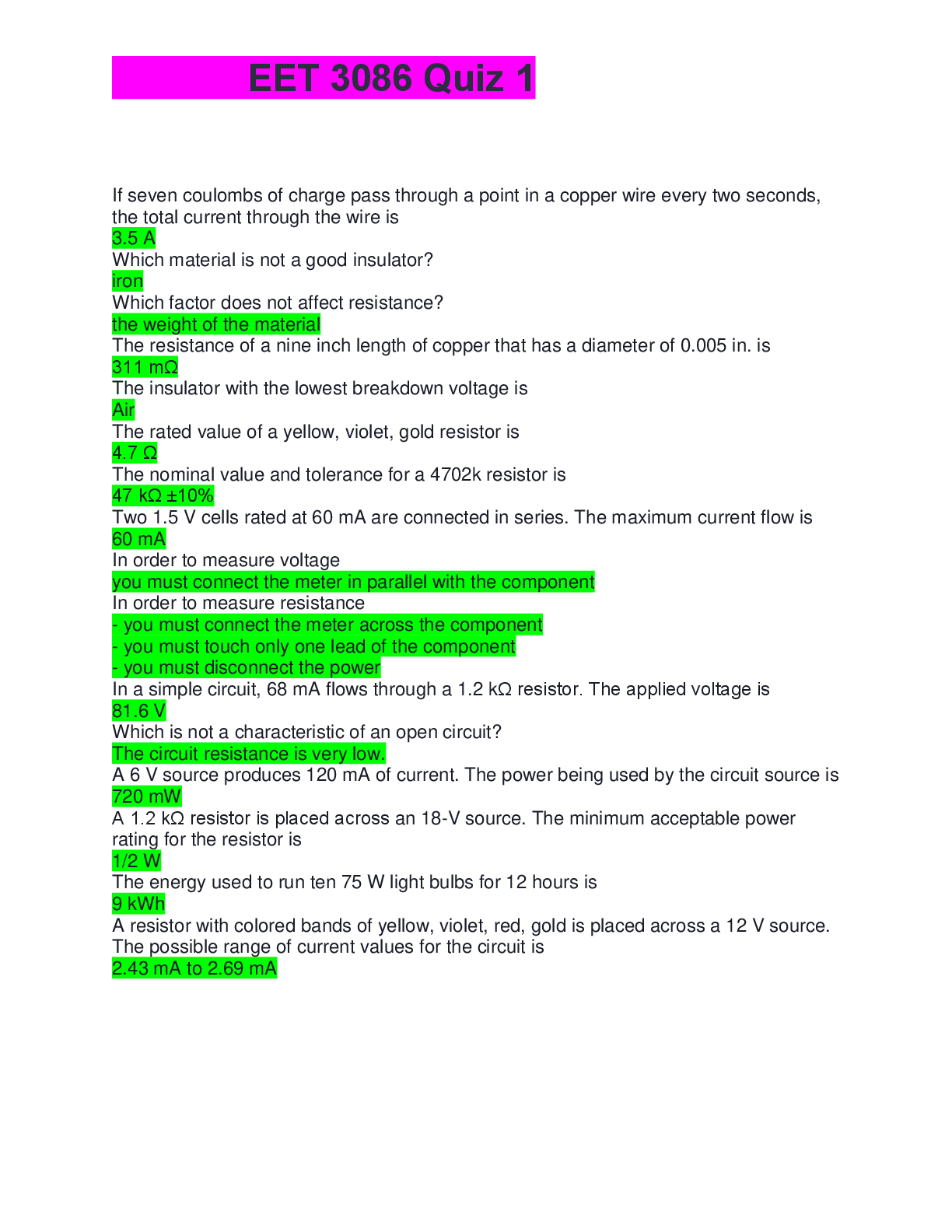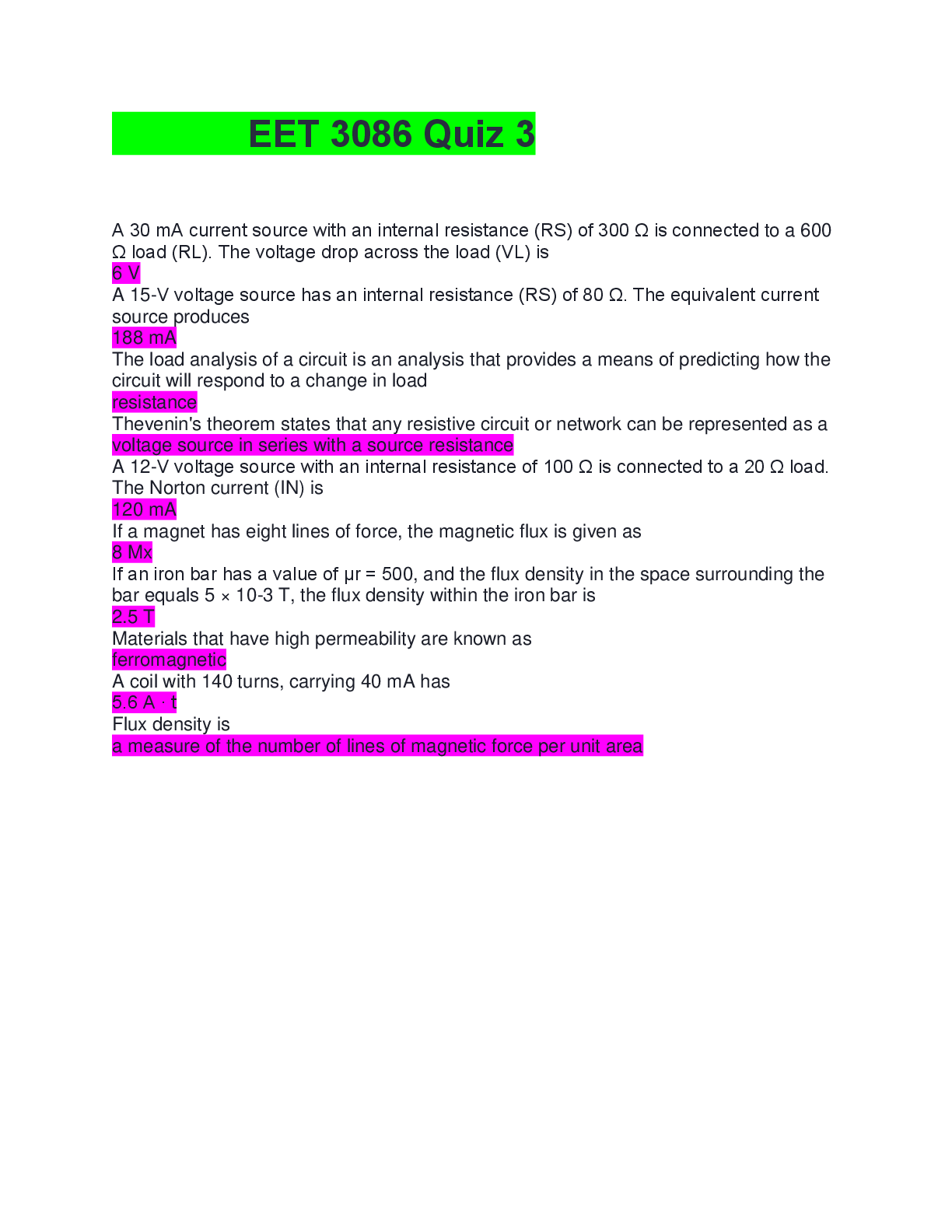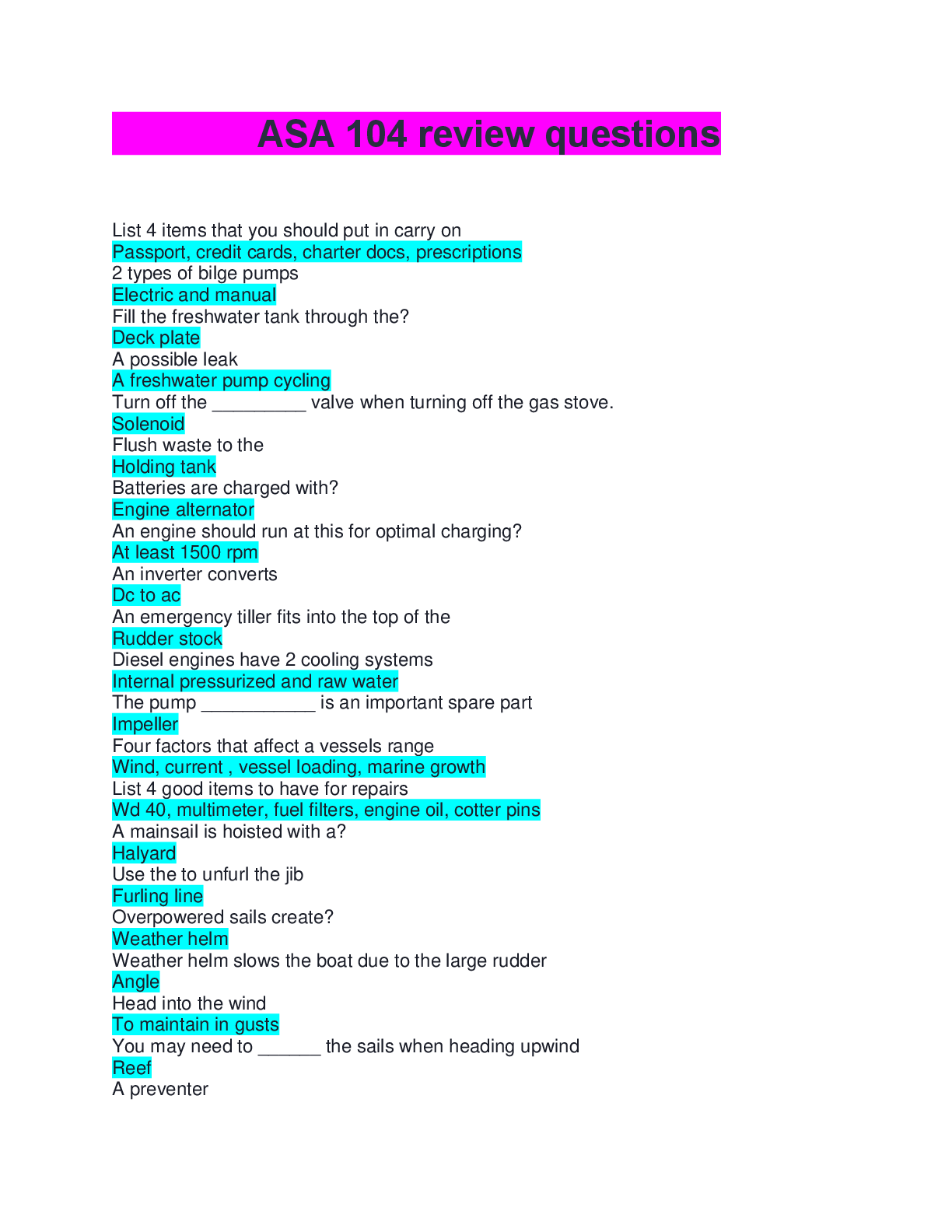Health Care > EXAM > TMC Practice Exam A:Questions & Answers: Updated A+ Score Guide Solution: 100%Verified (All)
TMC Practice Exam A:Questions & Answers: Updated A+ Score Guide Solution: 100%Verified
Document Content and Description Below
A 48 year-old female is admitted to the ED with diaphoresis, jugular venous distension, and 3+ pitting edema in the ankles. These findings are consistent with (ANS- heart failure A patient is adm ... itted to the ED following a motor vehicle accident. On physical exam, the respiratory therapist discovers that breath sounds are absent in the left chest with a hyperresonant percussion note. The trachea is shifted to the right. The patient's heart rate is 45/min, respiratory rate is 30/min, and blood pressure is 60/40 mm Hg. What action should the therapist recommend first? (ANS- Needle aspirate the 2nd left intercostal space All of the following strategies are likely to decrease the likelihood of damage to the tracheal mucosa EXCEPT (ANS- using a low residual volume, low compliance cuff A 52 year-old post-operative cholecystectomy patient's breath sounds become more coarse upon completion of postural drainage with percussion. The respiratory therapist should recommend (ANS- deep breathing & coughing to clear secretions A 65 kg spinal cord injured patient develops atelectasis. His inspiratory capacity is 30% of his predicted value. What bronchial hygiene therapy would be most appropriate initially? (ANS- IPPB A healthy adult female can exhale what portion of her forced vital capacity in the first second? (ANS- 70% A patient on VC ventilation demonstrates auto-PEEP on ventilator graphics. Which of the following controls, when adjusted independently, would increase expiratory time? 1. Tidal volume 2. respiratory rate 3. inspiratory flow 4. sensitivity (ANS- 1, 2, and 3 only Which of the following would be the most appropriate therapy for a dyspneic patient who has crepitus with tracheal deviation to the left and absent breath sounds on the right? (ANS- insert a chest tube Following cardiac surgery, a 55 year-old patient has the following ABG results: pH 7.50, PaCO2 30 torr, PaO2 62 torr, HCO3 25 mEq/L, SaO2 92%, HB 14 g/dL, BE +2. Venous blood gas results are pH 7.39, PvCO2 43 torr, PvO2 37 torr, and SvO2 66%. Calculate the patient's C(a-v)O2. (ANS- 5.0 vol % A patient on VC, SIMV with a VT of 500 mL has a PIP of 25 cm H2O, Pplat of 15 cm H2O and PEEP of 5 cm H2O. What is the patient's static lung compliance? (ANS- 50 mL/cm H2O Immediately after extubation of a patient in the ICU, the respiratory therapist observes increasing respiratory distress with intercostal retractions and marked stridor. The SpO2 on 40% oxygen is noted to be 76%. Which of the following would be most appropriate at this time? (ANS- Reintubation Which of the following patients would most likely benefit from pressure support ventilation? (ANS- A patient on SIMV with a mandatory rate of 12/min and total rate of 24/min. A patient receiving mechanical ventilation has developed a temperature of 99.9° F with purulent secretions over the last 12 hours. The respiratory therapist has also noted a steady increase in peak inspiratory pressure. What initial recommendation should be made to address these changes? (ANS- obtain a sputum gram stain Which of the following information may be obtained from a FVC maneuver during bedside pulmonary function testing? 1. FEV1 2. PEFR 3. FRC 4. RV (ANS- 1 & 2 only The respiratory therapist provides education for a patient who is being discharged home on aerosol therapy. The most important reason for the patient to follow the recommended cleaning procedures using a vinegar/water solution is that this solution will (ANS- retard bacterial growth A patient who complains of dyspnea is noted to have a dry, non-productive cough. On physical examination, breath sounds are diminished on the right, tactile fremitus is decreased and there is dullness to percussion over the right lower lobe. The respiratory therapist should suspect that the patient is suffering from (ANS- pleural effusion Which of the following suction catheters would be appropriate to use for a patient with a size 8.0 mm ID endotracheal tube? (ANS- 12 Fr A patient who is receiving continuous mechanical ventilation is fighting the ventilator. His breath sounds are markedly diminished on the left, there is dullness to percussion on the left, and the trachea is shifted to the left. The most likely explanation for the problem is that (ANS- the endotracheal tube has slipped into the right main stem bronchus. The respiratory therapist notes a developing hematoma after an arterial blood gas was drawn from the right radial artery. The immediate response is to (ANS- apply pressure to the site [Show More]
Last updated: 3 years ago
Preview 1 out of 35 pages

Buy this document to get the full access instantly
Instant Download Access after purchase
Buy NowInstant download
We Accept:

Also available in bundle (1)
Click Below to Access Bundle(s)

TMC Practice Exam A:TMC Practice Exam B Kettering:TMC practice Questions;TMC Practice Exam ( State Board Exam) :TMC State Board Practice Exam:NBRC Mock TMC Exam Review:C&S TMC Exam 1-6: Latest Updated A Score Solutions
TMC Practice Exam A:TMC Practice Exam B Kettering:TMC practice Questions;TMC Practice Exam ( State Board Exam) :TMC State Board Practice Exam:NBRC Mock TMC Exam Review:C&S TMC Exam 1-6: Latest Updated...
By Ace-It 3 years ago
$27.5
13
Reviews( 0 )
$9.00
Can't find what you want? Try our AI powered Search
Document information
Connected school, study & course
About the document
Uploaded On
Dec 07, 2022
Number of pages
35
Written in
All
Additional information
This document has been written for:
Uploaded
Dec 07, 2022
Downloads
0
Views
149


